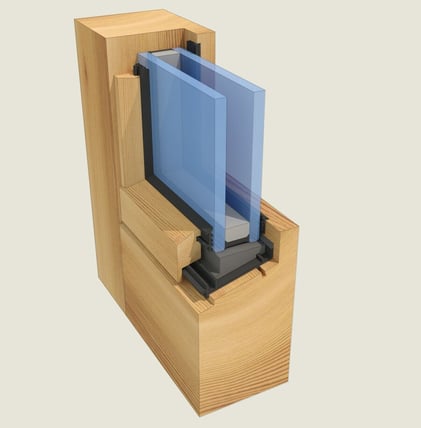With the right thermal glass, you can achieve serious home insulation benefits – a cooler home in the summer, warmer in the winter, plus the energy efficiency advantages that will lower your utility bills and your household’s impact on the environment.
But navigating your options, from standard insulated glass units (IGUs) to double glazing with all the thermal fixings, is easier said than done.
- How do you know what types of glass to use?
- What features do you need for adequate insulation? And that you don’t need to pay extra aaamoney for?
Here is a look at the different types of thermal insulated glass products you can use to help you make smarter decisions about your windows.
What Is Insulated Window Glass?
Insulated glass units, or IGUs, are the window systems used in double glazing. They consist of two panes of glass separated by an air space. Because of the natural thermal conductivity of glass, this dynamic between the two glazes and a sealed space serves to diminish the unwanted movement of thermal energy.
Glass will normally absorb heat. It then radiates, or gives off the heat, either in the form of unwanted heat loss in the winter or unwanted solar gain in the summer. The air space in an IGU slows down the movement of air, helping to keep the inner pane of glass warm in the winter and cooler in the summer, whilst the second glaze acts as an extra barrier of insulation.

Why use double glazed windows?
About 48% of the heat your home loses in the winter is going out through your single glazed windows.
By using insulated glass windows, you can dramatically decrease this unwanted thermal movement, making your heating and cooling systems more energy efficient, lowering your energy bills and improving the comfort level of your home. This is not to mention the increase in property value you'll get from having energy efficient windows in your home.

What Is Low E Glass?
Low E, or low emissivity, is the type of glass most commonly used in thermal double glazing. With this type of glass, a low emissivity coating is applied to one side of glass either during or directly after the manufacturing process.
This low E surface consists of microscopically thin layers of silver and other metal oxides, which act to reflect thermal energy whilst still allowing the visible light spectrum to pass through.
The low E surface is always on one of the inside surfaces of the IGU. Depending on your insulation needs, low E is just as effective at insulating your home in the summer as it is for winter window insulation.
Either way, the low E surface bounces heat energy back from where it came from – reflecting unwanted solar heat back outdoors and your indoor heat back inside in the winter.

How effective is this type of thermal glass?
With low E double glazing, your windows will be 40% more energy efficient than with standard double glazing, yet they only account for between 8 and 12% of the overall cost.
This is why most homeowners opt for this special thermal glazing with low E glass.
What Is Argon Gas in Double Glazing?
Another way to create thermal windows is to insert argon gas into the air space of your insulated glass unit. Argon is a non-toxic, odourless, colourless gas, so it is 100% safe to use. What it does, is it slows down the rate of thermal transfer even more, stopping more heat from passing through your windows.
The best thermal insulation windows combine low E glass with argon gas in an insulated glass unit. With this combination, you can make you windows approximately 50% more energy efficient than with standard double glazing.
To take this level of efficiency and quality even further, Thermawood also includes window thermal/acoustic seals as a standard practice. After all, if you’re going to insulate your windows with double glazing yet there are still open spaces or cracks for a draft to pass through, you’re not getting the complete product. With special draft seals machined into the windows, you’ll enjoy the ultimate in thermal insulation.
How Much Do Thermal Windows Cost?
Not as much as you may think. With today’s advancements in window technology, it is possible to retrofit your existing timber windows, leaving your current joinery in place and only replacing the single glaze with an IGU. With experienced window professionals, retrofitting is a much more streamlined (and less expensive) process than doing a full replacement.
You can also use special types of glass to achieve other window characteristics in addition to the thermal insulation, such as laminate glass for acoustic performance or toughened glass for enhanced security.
Thermawood’s process also makes it possible to retain their original character so you can keep the look and function of your prized double hung windows or other types of heritage windows.
And all of this for about one-third of the cost of having new double glazed windows installed.






